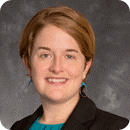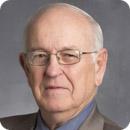Dec 16 2017
On Monday, December 18, for a rushed Council consideration of a Conditional Use Permit (CUP) application of The Piedmont Post newspaper to rent space in the Piedmont Center for the Arts Center at 801 Magnolia Avenue, a City property leased to the Arts Center with adherence to all City, State and Federal laws as well as restrictions on activities and hours.
The Council meeting will start at 7:30 p.m. in City Hall. Consideration of the sublease of the Arts Center is late on the agenda. The meeting will be broadcast on Channel 27 and via the City website under videos. Read the agenda HERE.
The City of Piedmont appears ready to become the landlord of one of Piedmont’s local newspapers, the Piedmont Post. Other media outlets have reported the sub-leasing story, yet the Post has failed to notify residents of the proposal and the unique scheme to rent the subsidized City arts space to the newspaper.
The City Council has full authority under the Arts Center $1 per year lease to determine who sublets the City owned and subsidized property.
The subleasing of public property at the subsidized Arts Center has drawn growing attention as residents begin to learn of the proposal. Numerous residents who are critical of the Post’s politicized editorial practices have stepped forward. Praise has also come to the Post from residents, particularly beneficiaries of the Post’s coverage.
According to correspondence received by the City in regard to the application to house the local newspaper in a Piedmont government owned building designated for the arts, the City will receive more “bad press.” The Piedmont Post, is owned and operated by Gray Cathrall, a founder and recent Board member of the Piedmont Center for the Arts.
A number of residents including a former School Board member, candidate for City Council and a City Commissioner, a former President of the Piedmont Education Foundation, and Arts Center neighbors, to name a few, have come forward decrying the notion of the Post as a renter of a subsidized City building. Some opponents of the proposal are intimidated by the Post and have been afraid to come forward with their names.
Written comments were presented to the Planning Commission and are included in the staff report linked at the bottom of this article.
One detailed comment is copied below:
Dear City Council,
As a long-term Piedmont resident, I am strongly opposed to providing space in the PCA to the Piedmont Post Newspaper. There are several factors behind this. First of all, it is an egregious conflict of interest for a sitting Advisory Board Member to simultaneously be the leader (editor) of the proposed tenant. Even if that Board Member is completely recused from the decision, the other Board Members undoubtedly have a close relationship with the Editor and cannot possibly render an unbiased decision regarding potential tenancy.
Second, the longstanding biased Editorial bent of the Piedmont Post should not be condoned by the city. The Post has gone out of its way to malign certain arbitrarily non-favored candidates, coaches, etc. The maligning bent in some instances has been severe and toxic.
Third, the Post is run with mysterious finances. Although there are some subscriptions, there is also a long-term use of “underwriters” as the mechanism of funding the Post. How exactly this additional money is used is unknown, and, certainly, having underwriters who provide large cash payments seems inherently biased — one would presume that large donations would inherently introduce biased coverage.
If Piedmont truly had an unbiased, subscription-based, jewel of a local paper, then placing it in the PCA would be suitable. Instead, we have a highly biased, donation-based, and occasionally mean-spirited paper, and thus placing it in the PCA and providing public support to it is clearly the wrong thing to do. It would not be in the community interest.
Tim McCalmont, Piedmont Resident and former President of the Piedmont Education Foundation
City of Piedmont as landlord to a newspaper.
The original lease for the City’s property at 801 Magnolia housing the Arts Center specifies hours of operation, adherence to all City, State and Federal laws, notices to be provided to the City, etc. See copy linked below.
The sublet lease was not provided during Planning Commission consideration. One lease condition proposed to be breached by the sublet is allowing hours past 11:00 p.m. bringing great concern to neighbors with school age children and senior residents desiring quiet late nights contrary to the proposed late night business activities running until 12 midnight on school nights.
Many have expressed concern that Piedmont government facilities should only be rented for community wide services, as originally allowed for the arts. Additionally, the newspaper is not accepted by all as a public service because of “egregious acts” against the schools, individuals, candidates for office, news manipulation, and being a bad influence on Piedmont youth.
Those attempting to find out more about the unusual transaction that would allow one local newspaper to receive a subsidized, government rental space leased for $1 per year have yet to receive complete answers to the following:
- What is the financial condition of the Arts Center ?
- Why wasn’t the space advertised locally to encourage other renters of the highly desirable central Piedmont location ?
- Why did the Center break from a singular use as an Arts Center?
- Did the Center’s Board hear from their former Board member and potential renter at a Board meeting gaining an inside opportunity?
- Could the City of Piedmont use the space rather than have it sublet?
- Why was there no notice in the Post of the application or the timing of the hearings?
- Why wasn’t there ever a meeting with neighbors to learn about their concerns in regard to parking and late night business meetings on school nights?
- Why is the matter being considered so hurriedly over a 7-day holiday period with many Piedmonters away or preoccupied?
- What is the rush?
- How long has the proposed space not been used and available?
- At the time the zoning was changed on the property was the space available?
- Why wasn’t notice given to the residents of Piedmont at large for alternative use of this important Piedmont property?
- What is the relationship between the City and the newspaper such that the newspaper receives preferential treatment over other media outlets?
- What will the rent be?
- Has the City Council been provided with the proposed sublease?
At the December 11, 2017 Piedmont Planning Commission meeting, the Planning Director provided advice, plus public comments were received. The Commissioners, without hearing from the business owner or whether the proposed usage complied with the requirements placed on the Center in their lease, recommended approval of a sublease for part of the Piedmont Center for the Arts for the Piedmont Post newspaper.
City Council decides what can be in the Arts Center building.
The lease conditions were changed in 2016 to allow uses allowed in the public zone which soon opened the ability to sublease the property to a for-profit entity. The Council revised the City Code in 2017 to allow for-profit businesses to be in the Public Zone. The change from non-profit zone uses to for- profit uses in the Public Zone was never put on a Piedmont ballot per Charter requirements to obtain Voter approval. Piedmont voters were not allowed to rule on the significant change.
The intent of the Charter was never pursued by the City, despite receiving an affidavit from a former mayor and an email from another former mayor informing the City Council that the intent of the Charter was being misinterpreted. The zoning change was singularly approved by the City Council, and without extensive reporting, was largely unrecognized by Piedmont voters.
There was concern at the time of the zone change allowing businesses in the Public Zone, such as a newspaper office or other commercial enterprise, in the scant public space available.
In 2011 when 801 Magnolia Avenue was developed as the Arts Center, the City Council, did not offer the property to various potential users of and acted to permit the Piedmont Center for the Arts. Strict, limited hours of operation were incorporated into the lease agreement in consideration of the location next door to a home and in a school/residential neighborhood. Center founders Gray Cathrall, editor and owner of the Post, and Nancy Lehrkind, now Vice President of the Center Board, fostered the Center lease through the City Council.
The Municipal Pool, recreation tennis courts, and the schools all limit their operation hours to accommodate neighbors and minimize intrusive neighborhood night light pollution, noise, traffic, parking in the immediate vicinity of the Center. No traffic studies of the proposed new tenancy were produced.
At the December 11, 2017, Planning Commission meeting few questions were asked regarding the application before the recommendation of approval to the City Council. Commissioners relied on the narrow consideration factors presented by the planning staff. The leases between the City and the Arts Center were not presented to the Planning Commissioners during their consideration. Commissioners indicated neighbors could expect noise and traffic from schools without regard to the existing limitation on late night hours.
The integrity and character of the newspaper was not part of the Planning Commission consideration, although both pro and con opinions of the newspaper were presented at the meeting. The City Council is in a different position being the landlord of the property.
Arts Center Board member, Nancy Lehrkind, addressed the need for more revenue to support the Arts Center programs, while noting the incompatibility of joint use of spaces by various businesses or organizations. No information indicating the space was advertised to potential market rate renters. No financial statements of the viability of the Arts Center were provided to the Commission. Lehrkind stated the Post would pay “top dollar” for the space, however the rental fee was not disclosed.
The Post on the application signed by Post owner Gray Cathrall stated the gross annual revenue of the Post equals $380,000.
The staff report includes comments/letters, documents, leases and the recommendation. READ the staff report HERE.
Comments can be sent to the City Council at the links below:
All Council members will receive comments sent to the City Clerk at jtulloch@piedmont.ca.gov
Recent news article by The Piedmonter newspaper can be read HERE.













